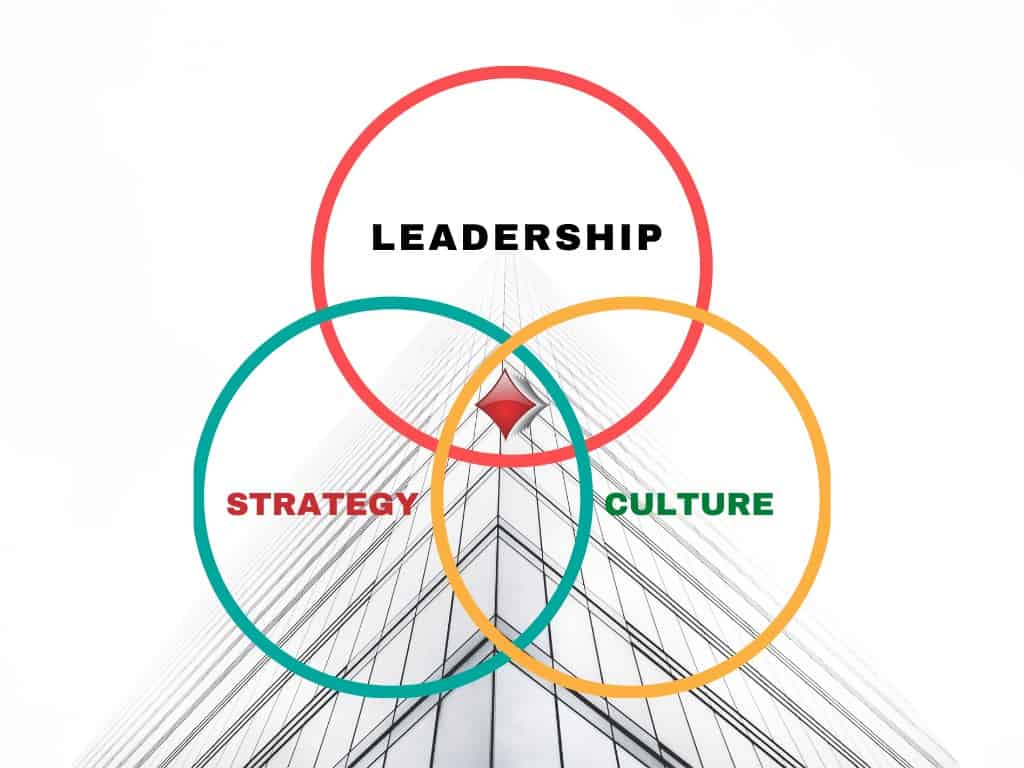Why Do New Executives Fail
The failure rate of new Executives is approximately 50%, largely due to an inability to lead others (Hogan and Kaiser, 2005). On average, nearly 30% of Standard and Poor 500 CEOs are dismissed annually and the tenure average is approximately 5 years (The Conference Board, 2015).
In a study done by Ulrike Malmendier, assistant professor of economics of the University of California, Berkeley, and Geoffrey Alan Tate, assistant professor of finance at UCLA’s Anderson School of Management- the performance of the CEOs’ who won more than 1 reward between 1993 and 2002 was examined and found that Superstar CEOs, companies under-performed the broader market, both in terms of stock returns and returns on assets, over the one-, two- and three-year periods following the award. But the CEOs themselves did just fine: Award winners tended to receive higher compensation, mostly equity based, than other CEOs.
In his exceptional article- The curse of the superstar CEO / HBR 2002 – Rakesh Khurana points out that the fascination with “Superstar CEO’s”/ or Charismatic leaders who are presented by media and a PR machinery as modern day Midas create a plethora of problems for the organisation
- Blind trust on charisma exaggerates the impact that CEOs have on companies.
- The idea that CEOs must have charisma leads companies to overlook many promising candidates and to consider others who are unsuited for the job.
- Charismatic leaders can destabilize organizations in dangerous ways
The story of Blockbuster’s disruption is practically business legend: in 2000, a tech founder named Reed Hastings approached Blockbuster CEO John Antioco about the possibility of acquiring his startup, a movie rental company called Netflix, for $50M. Antioco turned down the offer. Netflix went on to become a $150B company, Antioco was out as CEO by 2007, and Blockbuster was bankrupt by 2010.
In a desire to move Ford into the modern – digital age- Mike Fields focused so much on the new initiatives that the company took its eye off the ball on existing/ core business Ford’s business started to falter. Sales flagged, and Ford’s share price dropped by 40% from the time Fields took over the CEO spot in 2014 to his departure in 2017.
The destructive impact of a charismatic leader can be seen in Jeff Skilling’s ill-fated career at Enron. In this case, the demands of the leader induced blind obedience in his followers. As we now know, Skilling’s abilities as a new economy strategist were considerably overrated. What he clearly excelled at, however, was motivating subordinates to take risks, to “think outside the box”—in short, to do whatever pleased him.
How does AceProHR increase the probability of Executive Success ( not just Executive Search)
Executive search is easy- especially when you have BD engine / or Global office network that regularly feeds you a steady supply of mandates. I have seen “global Executive search” firm place the same CHRO- in 3 different organisations over a period of 8 years , work with 3 of the top 5 companies in an Industry and present the same panel of candidates for similar searches .
Working on a mandate where you focus on Executive and company success – takes the complexity up couple of notches. It makes you ask the client- tough ( read risky! for account) questions – on succession planning , on reasons for frequent changes, on their culture and their strategy. So how do we do it better- We question information Asymmetry and then find Executives at the Intersection of Leadership, Culture & Skills.
Question Information Asymmetry
Organisations tend to reject candidates from inside the organisation because they know too much about them, and hire from outside because they have “potential”. Our POV on Information Asymmetry and Decision Making in Succession Planning & Selection will give you more details
- Why are you not hiring from within the organisation.
- If you considered someone from Inside the organisation- why did you reject him/her ?
- What was the selection process for the internal candidate(s)
- What would make you reconsider Internal Candidate(s)
- Do you think the internal candidate(s) would stay in the organisation and work seamlessly with the new leader?
In August 2013, Steve Ballmer abruptly announced that he would step down as chief executive of Microsoft as soon as his replacement could be found. Thus began one of the most important CEO searches in the past decade—and a case study in the dos and don’ts of senior leadership succession.
At the time Microsoft was the third-most-profitable company in the United States and the fourth most valuable. Nevertheless, this well-respected global technology giant didn’t seem to have a plan for replacing Ballmer, even though he had, according to most informed observers, underperformed for years. (Critics cite his slow move into mobile, social media, and video along with ill-fated acquisitions and product reboots.
Microsoft seemed to start from square one, concentrating mostly on external candidates. The board cast a wide net across a number of industries and skill sets, identified more than 100 candidates, talked with several dozen, and then focused intensely on about 20. Among them was Steve Mollenkopf, the COO of Qualcomm, who fell out of contention when he was promoted to that company’s top job. Alan Mulally, who had just turned around Ford and was the favorite candidate, took his name off the list Finally, in February, six months after Ballmer had declared himself a lame duck, Microsoft announced that an insider, Satya Nadella, would become the third CEO in its history.- And we all know Nadella would become a benchmark in invigorating a company almost glacial in its response to change ( The high Cost of Poor Succession Planning- Araoz, Nagel & Green- HBR- May June 2021)
Executive Search at the Intersection of Leadership, Strategy & Culture
Leadership
We look for 7 essential competencies in a leader
- Hands on Experts– Jeff Bezos had 155 patents as of July 2018, Steve Jobs had 620, Lisa Su rose to the CEO role at AMD , starting as an Engineer and extensively contributed to journals . John C Martin – who served as CEO of Gilead Sciences worked adn published extensively on development and Production of antiviral drugs for HIV. Chambers of Cisco in a Lecture at the Harvard Business School said ” that all companies — even ones that aren’t principally in tech — are in fact digital and need versatile leaders who can see revolutions coming.” You can see the revolution coming – only when you are hands on !
- Create Meaning– For themselves and for their organisation. In the book Progress Principle Teresa Amabile and Steven Kramer – found that of all the events that can deeply engage people in their jobs, the single most important is making progress in meaningful work.
- Create Capacity/ Talent Factories – Create the future by allocating resources- and not just capital but selecting people who can wade through ambiguity and commit to long gestation projects with uncertain outcomes and high tolerance for failure . The Flipkart “mafia ” has spawned some 200 startups, HUL has successful managers seeding more than 200 key roles across the Unilever universe.
- Encouraging collaboration and removing organisational barriers – Leaders not only break silos but understand that collaboration thrives on access to people, information, tools and removal of distractions.
- Creating a Performance Driven Culture – A friend of who lead a commando unit for the Indian army in “enemy territory” said it was drilled from his cadet days that an objective which is more than 3 lines is not an objective !! – While Corporate firms do not have the luxury of reducing goals to 3 lines- Creating objectives which make sense and not too many of them is the core for creating a performance driven .culture. Combine this with Recognition , Recognition , Promotions and job enrichment- you have the foundation for a great culture
- Communication – Written, verbal and body language – Some people try to call it “Executive presence” – but that is just corporate speak for someone who communicates with intent
- Role Model– Being a role model means the leader is at work “all the time”- and any indiscretions outside work carry as much weightage as those at work.
Strategy
Potential hires need to be tested on the coherence of their thought process. Do not just focus on the resume- ask open ended questions and check answers for –
- Achieving a particular objective: It should be clear what success looks like.
- Set of actions: There should be a concrete plan.
- Credible and coherent: The plan needs to make sense and hold up under scrutiny without having conflicting components.
- Focused on overcoming the biggest hurdle(s): There should be a clear diagnosis of the biggest problems to be solved, and the plan should focus resources on overcoming them
Culture
Organisational Culture is formed and driven by the Behviour and value system of the top leaders. A senior executive will assist in creating a culture of innovation, merit and the right values . The problem starts when we start taking of a straitjacketed- “cultural fit” rather than hire leadership who will compliment and supplement your culture. Fit does not work anymore- you do not want a leadership core of 20 in senior management analysing and taking decisions from the same cultural “filter”. Cultural Diversity breeds innovation, it drives “conflict” of ideas, and problem solving approaches – and that is what makes a successful company in today s environment. Last word should go to Patty McCord- Chief Talent Officer at Netflix from 1998 to 2012
I had a similar “aha” moment when I interviewed Christian Kaiser, who was managing a group of 25 programmers at AOL. I had tried to hire quite a few people from his group, because they were doing the kind of technical work we needed. But they all wanted to stay at AOL. Netflix was a much sexier place to work, so I was perplexed. When I asked them about it, they would say, “I have the most amazing boss! He’s the best communicator I’ve ever known. I can’t bear the thought of leaving him.” I told my recruiters, “Go get that guy.” Christian wasn’t what I’d expected. He had a thick German accent, and he stuttered. This was the great communicator? On top of that, he was clearly nervous. Our conversation was painful for him and for me. But when I asked him to explain, in simple terms, the technical work he was doing, he was transformed. He still stuttered, but he gave me a riveting explanation, and I realized, That’s it! He’s great at making really complicated things understandable. We hired him, and he’s been an amazing team builder.
Omar Farooq- Founder & CEO AceProHR
References
- Why good leaders fail- Morela Hernandez, Jasmien Khattab, and Charlotte Hoopes – Sloan Management Review April 2021
- Management Derailment- Personality Assessment & mitigation- Joyce Hogan, Robert Hogan , Robert Kaiser
- Personally Disrupted: 14 CEOs Who Got Axed After Failing To Navigate Disruption – CB Insigerehts Research
- Information Asymmetry and Decision Making in Succession Planning & Selection– by Omar Farooq, AceProHR
- The High Cost of Poor Succession Planning by Claudio Fernández-Aráoz, Gregory Nagel,and Carrie Green
- How Tech CEOs Are Redefining the Top Job – MIT Sloan Management Review- Boris Groysberg and Tricia Gregg
- How to become a Game-changing leader- Doug Ready and Alan Mulally in MIT Sloan Management Review- 2017
- How to Become a Strategic Leader by Julie Zhuo- MIT Sloan May 6 2019
- Stop hiring for Cultural fit by Patty McCord- HBR January – February 20018

